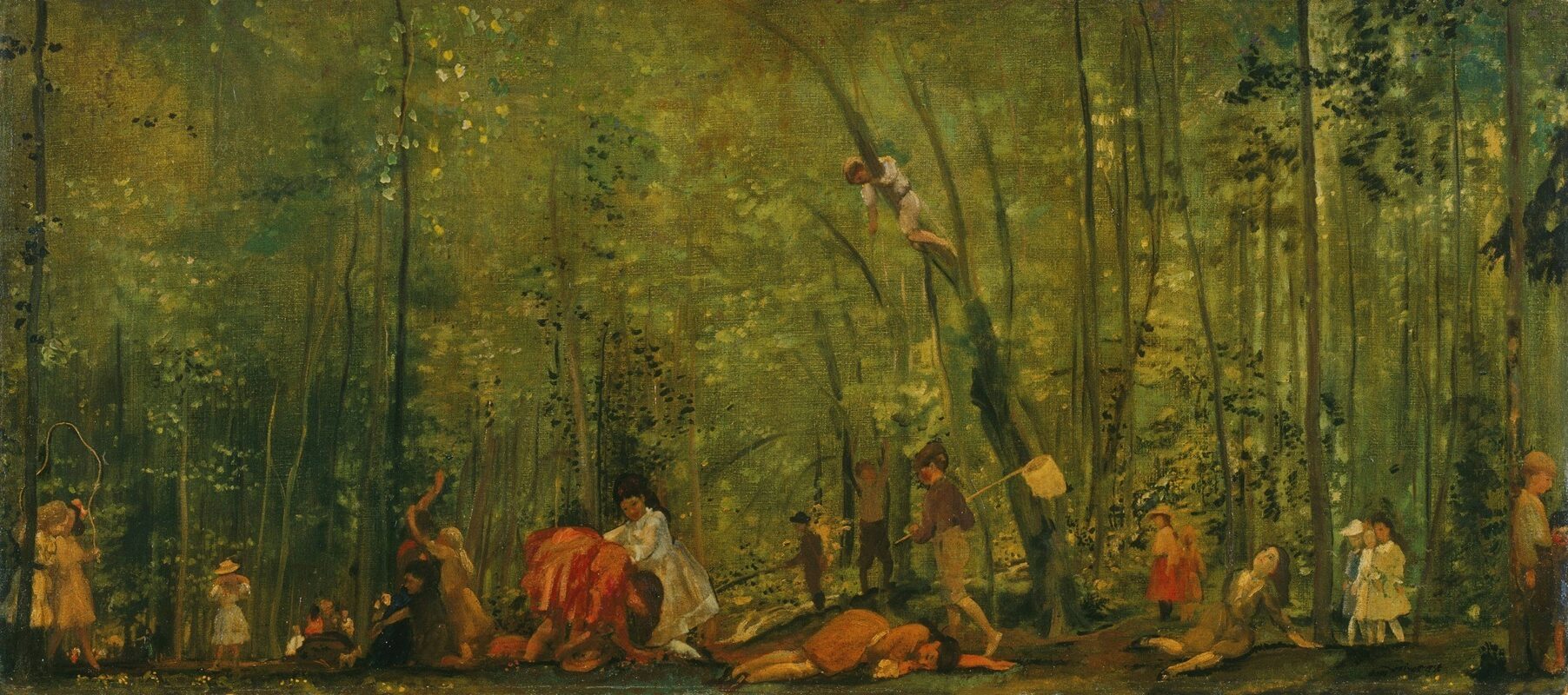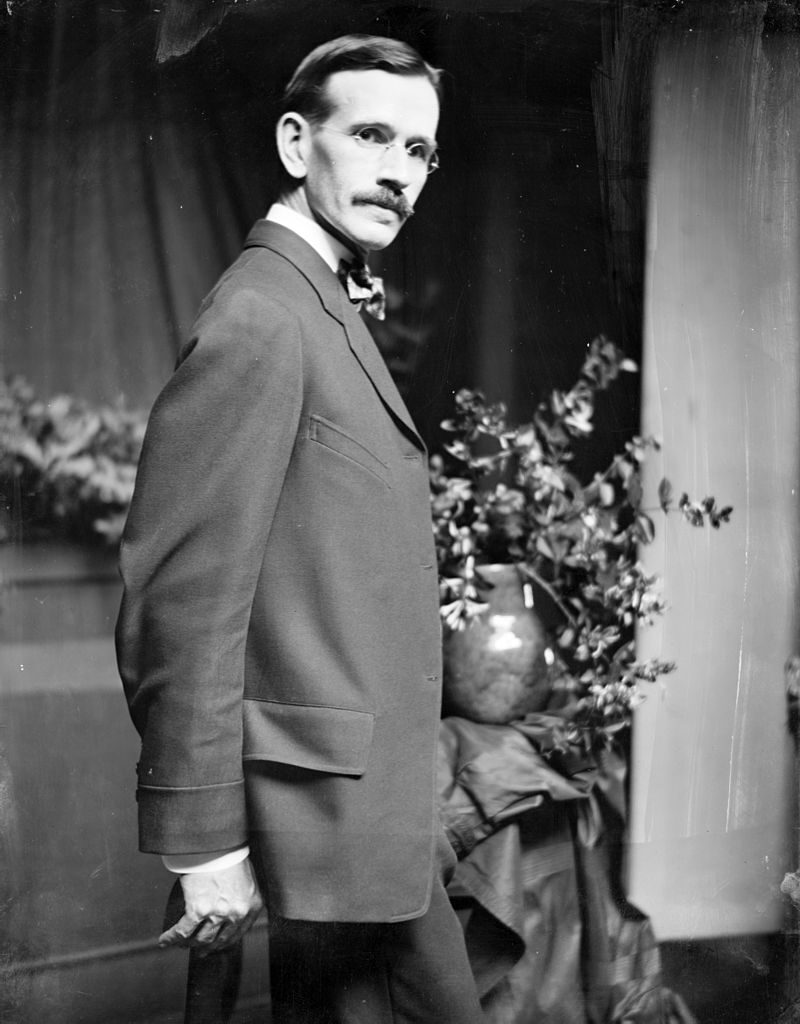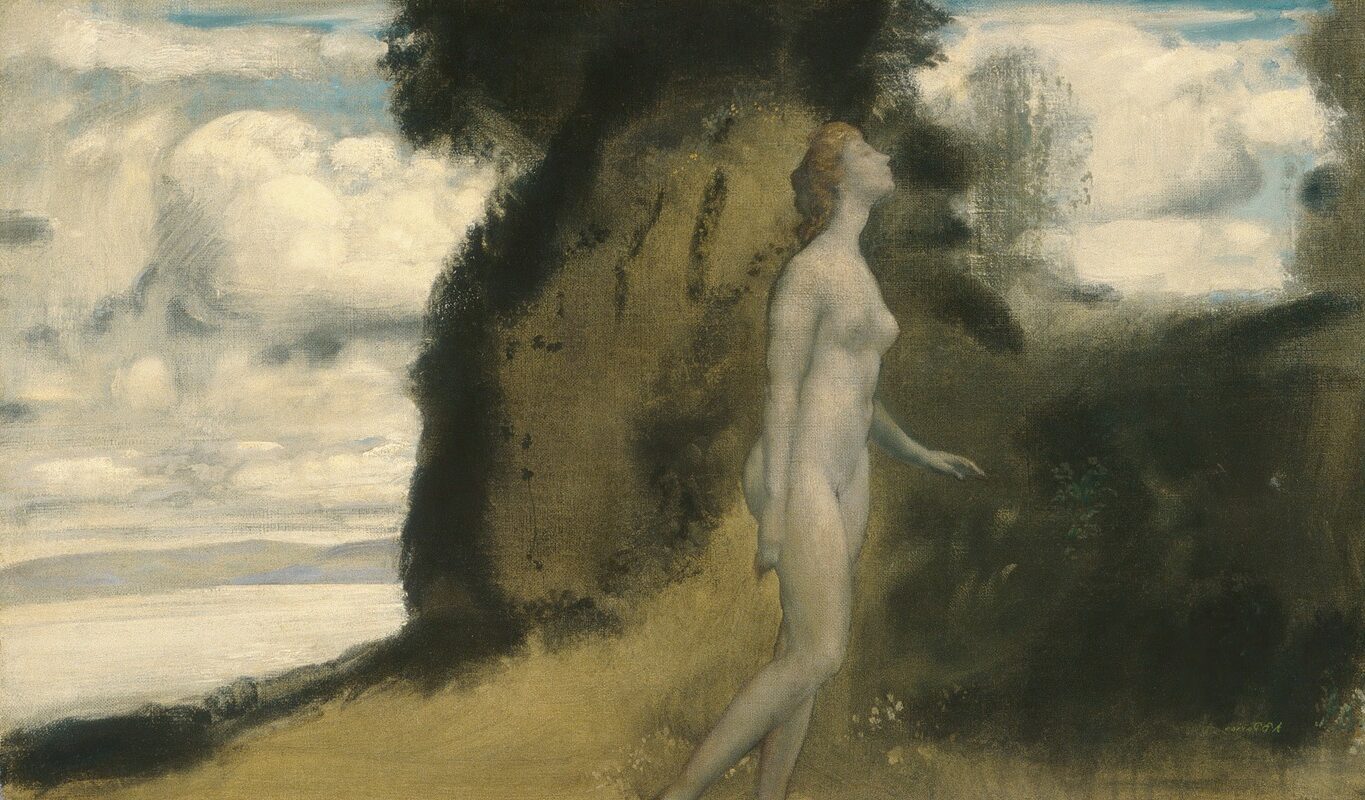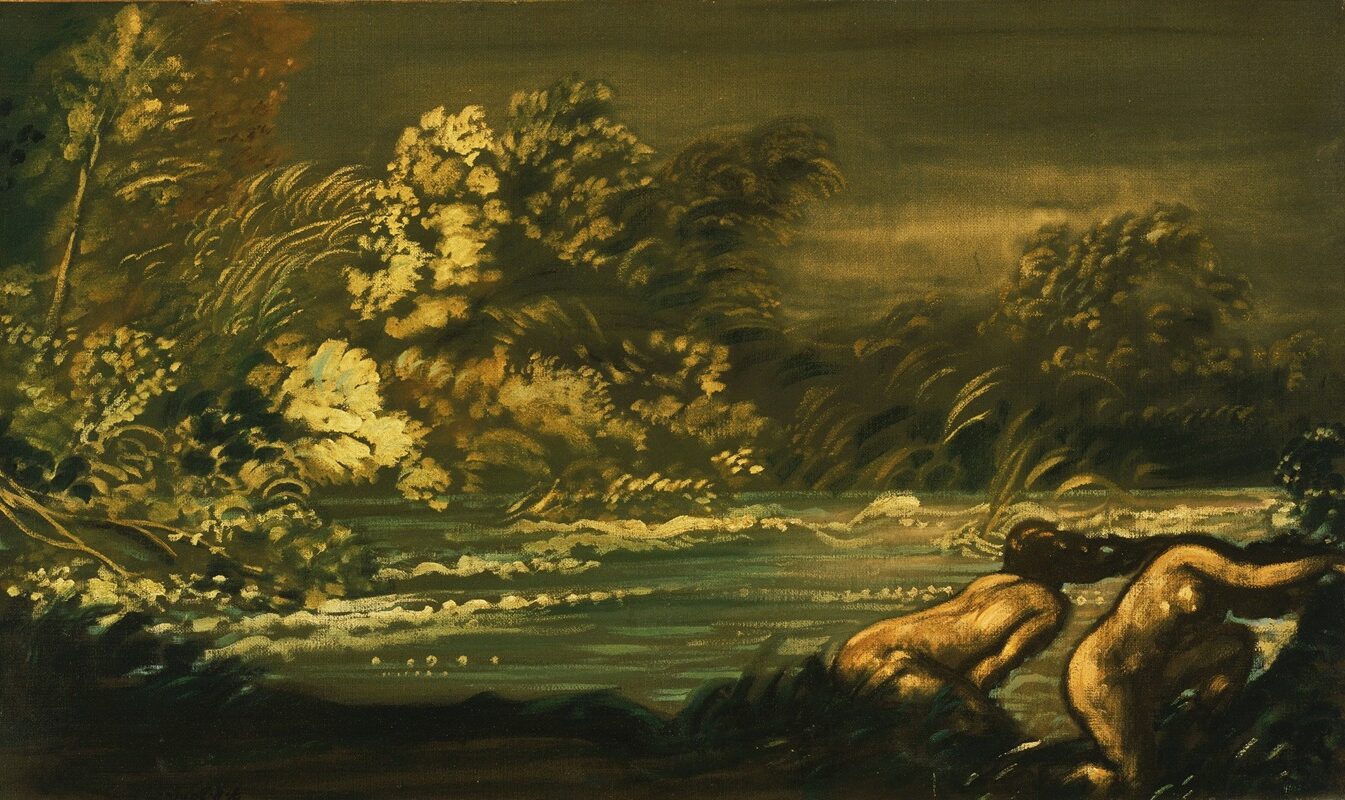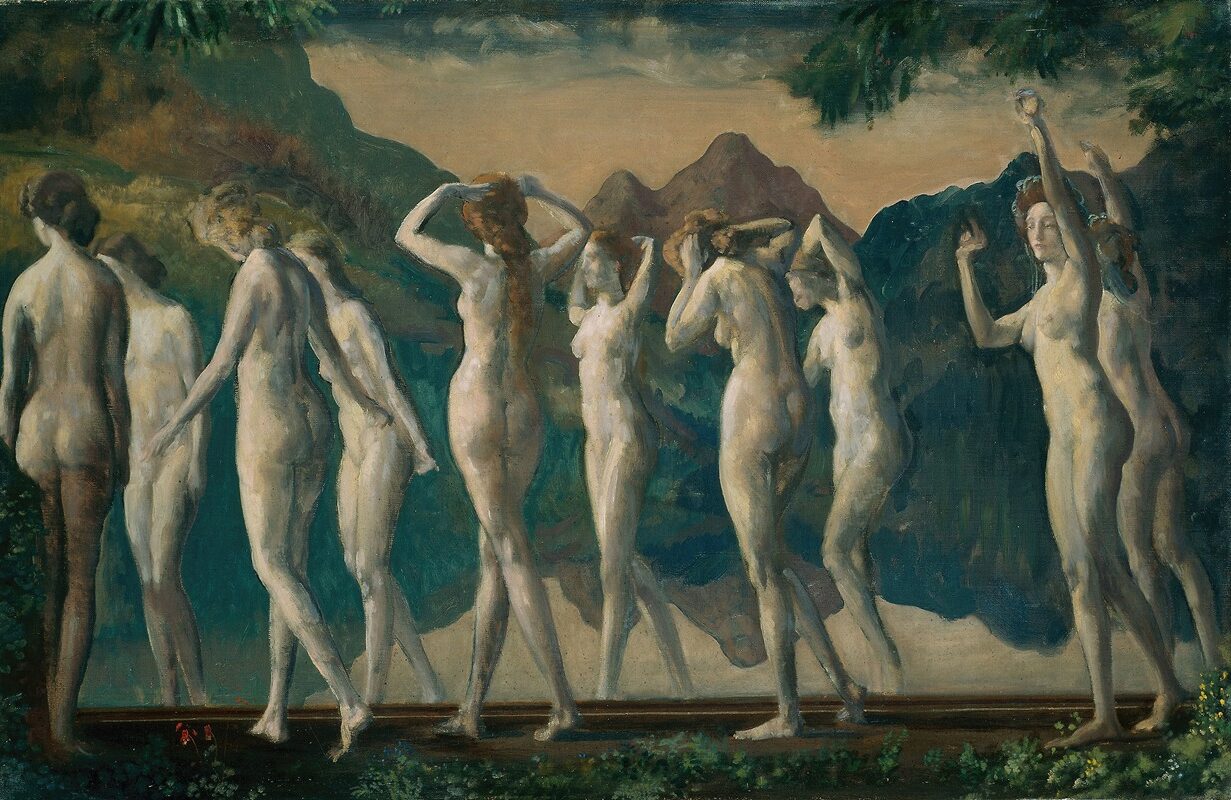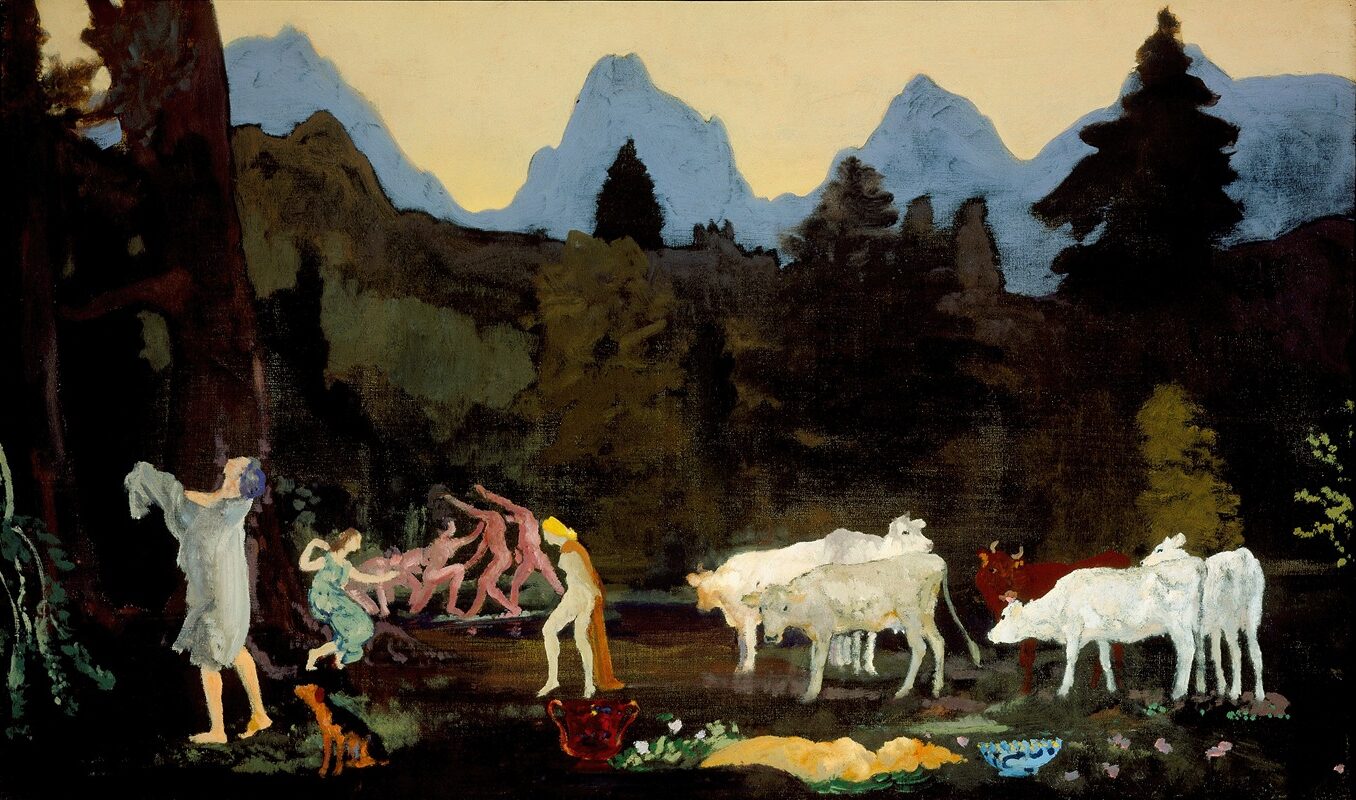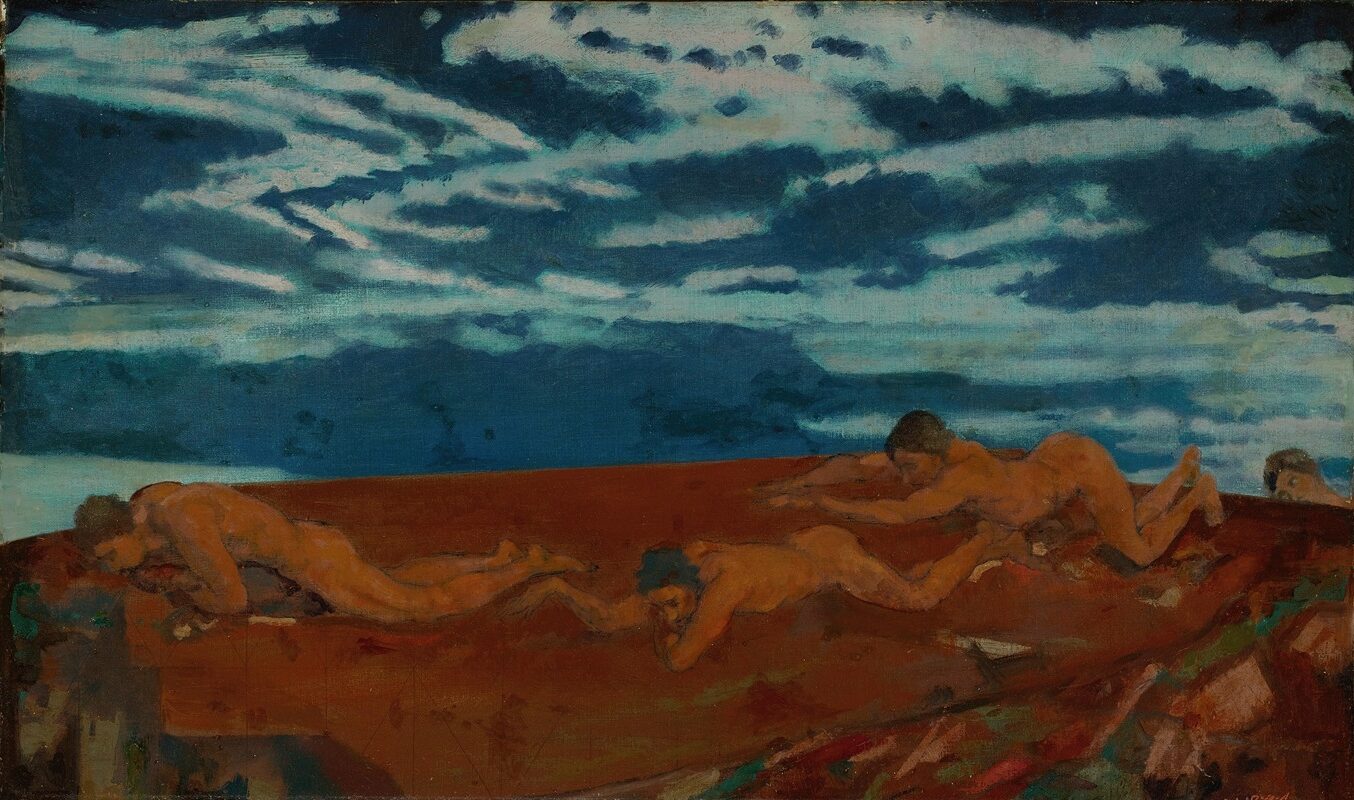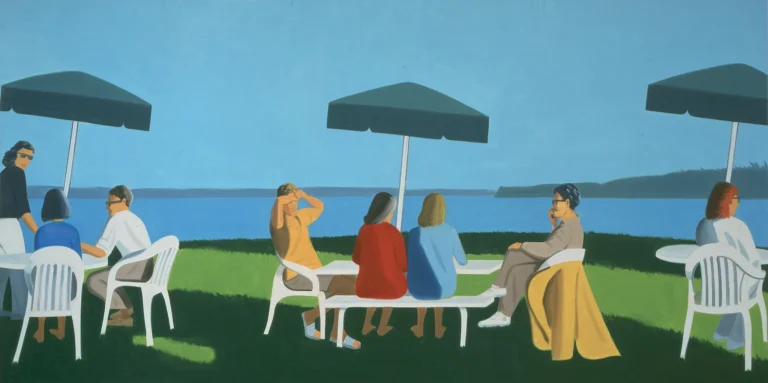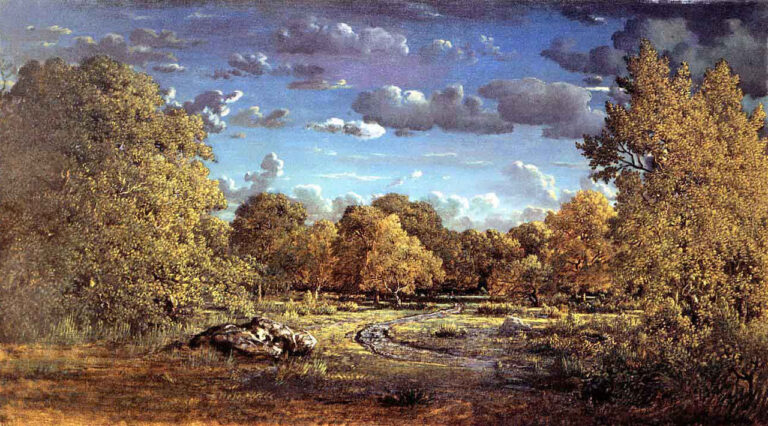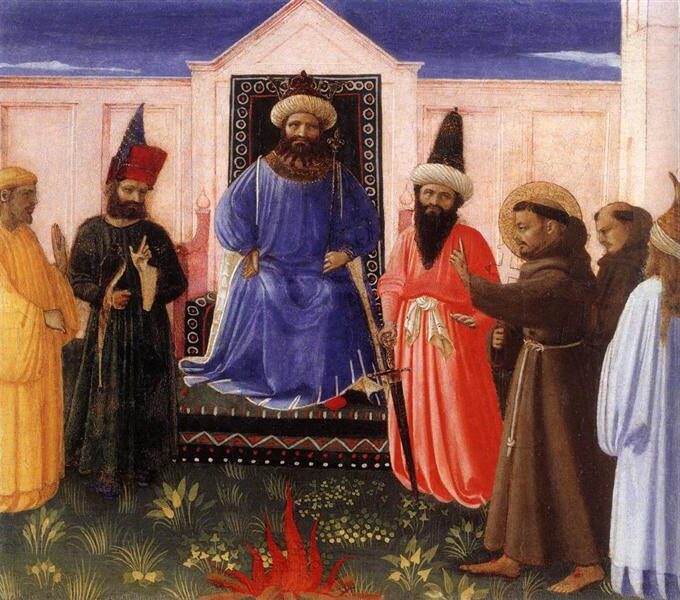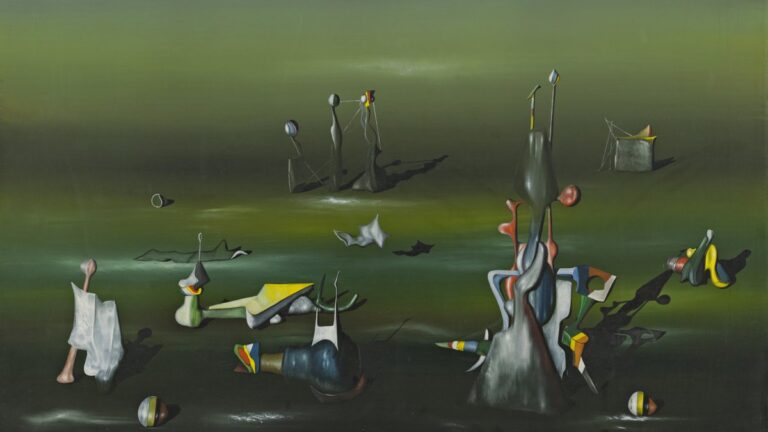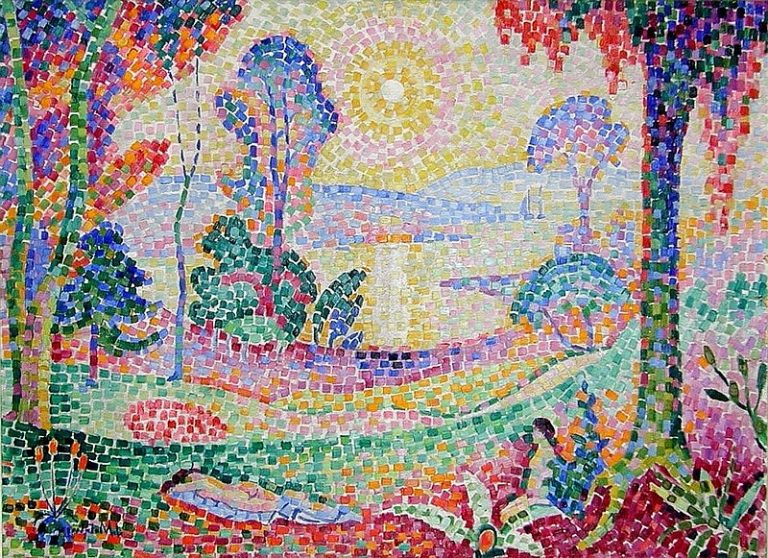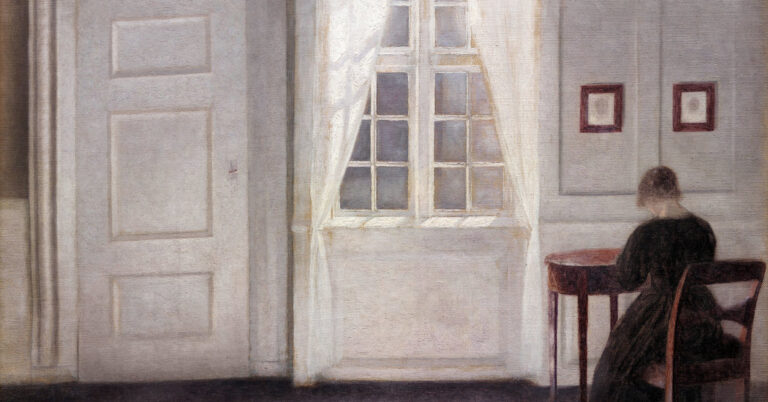Davies Painter: Mastering the Art of Contemporary Visual Expression
Born: September 26, 1862, Utica, New York, US
Death: October 24, 1928, Florence, Italy
Art Movement: The Eight, Ashcan school
Nationality: American
Institution: Chicago Academy of Design, Art Institute of Chicago, and Art Students League
Davies Painter: Mastering the Art of Contemporary Visual Expression
Life and Career of Davies the Painter
Arthur Bowen Davies (1862-1928) was an influential American artist who helped shape modern art in the United States. His work combined romanticism with modern influences, creating mystical and dreamlike paintings that captivated audiences.
Early Life and Education
Arthur B. Davies was born on September 26, 1862, in Utica, New York. His artistic talents emerged early, leading him to pursue formal training.
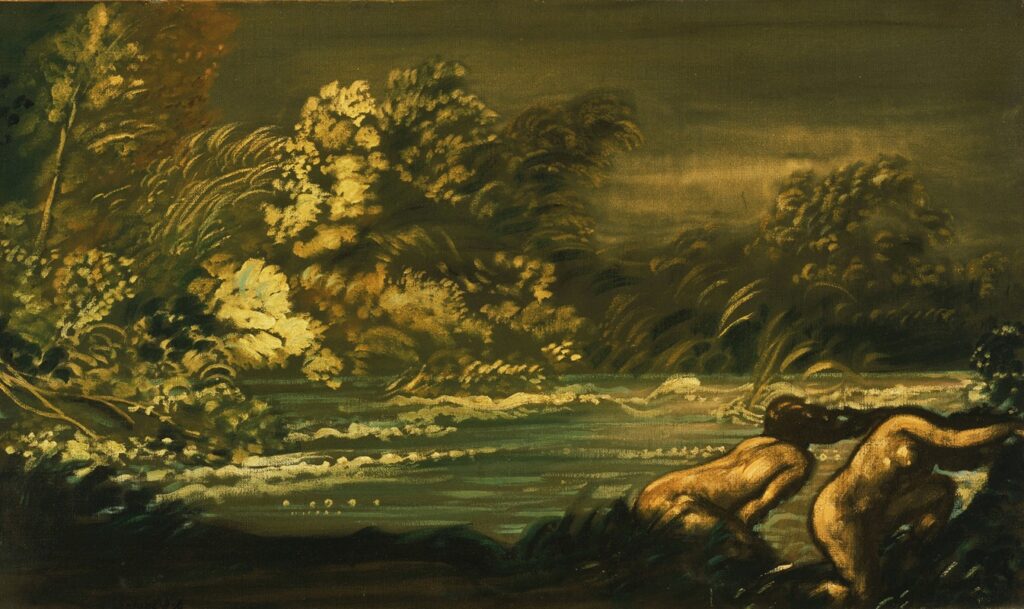
The Flood, 1903, by Davies
Davies studied at the Art Institute of Chicago and later in New York City, where he absorbed various artistic influences. His education wasn’t limited to American shores. He traveled to Europe, where he was exposed to classical and contemporary European art movements.
These early experiences shaped his unique artistic vision that would later blend romanticism with modernist tendencies. His formative years established a foundation in traditional techniques while cultivating the imaginative style that became his signature.
Rise to Prominence
Davies gained recognition in the early 20th century as both an artist and advocate for modern art. His breakthrough came through his association with the group known as “The Eight,” though his romantic style differed from the urban realism of many members.
His most significant contribution to American art history was his role in organizing the landmark 1913 Armory Show. This revolutionary exhibition introduced European modernism to American audiences.
Davies traveled extensively throughout his career, including trips to Europe and California, drawing inspiration from diverse landscapes and artistic traditions. His connections to art patrons and collectors in Boston and New York further cemented his influential position in American art circles.
Major Works and Exhibitions
Davies’ paintings often featured dreamlike landscapes populated with classical figures in idyllic settings. Works like “Unicorns” and “Maya, Mirror of Illusions” exemplify his mystical approach to art.

Maya, Mirror of Illusions, 1910, by Davies
His painting style evolved throughout his career, incorporating elements of Symbolism and Post-Impressionism while maintaining his distinctive romantic vision. Davies experimented beyond painting, creating notable work as a printmaker and tapestry designer.
Major exhibitions of his work occurred at prestigious venues across America. The Delaware Art Museum holds significant collections of his work and papers, preserving his artistic legacy.
His influence extended beyond his own art through his advocacy, helping younger artists gain recognition and introducing Americans to modernist movements that would transform the art landscape.
Artistic Style and Influence
Arthur B. Davies developed a unique artistic approach that blended romanticism with modernist elements. His work showcased both traditional techniques and avant-garde sensibilities, making him a bridge between different artistic movements in American art.
Evolution of Style
Davies’ style evolved from traditional to more experimental throughout his career. His early works featured detailed landscapes with careful attention to light and shadow. As he progressed, his paintings became more mystical and dreamlike, incorporating elements of symbolism.
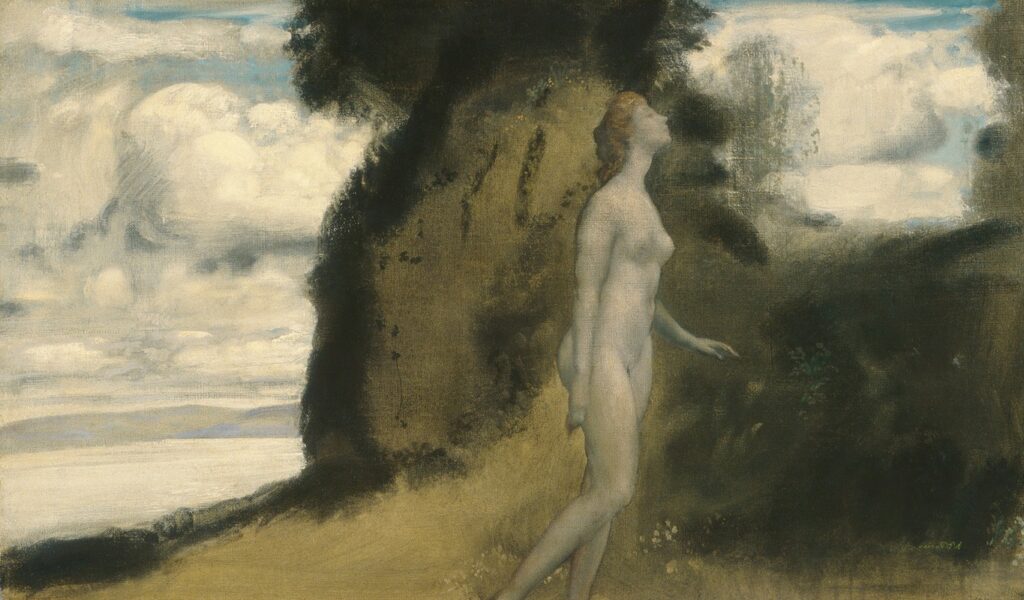
A Measure of Dreams, circa 1908, by Davies
By the early 1900s, Davies had developed his signature style—romantic scenes with classical figures set in idealized landscapes. His technique combined soft brushwork with vibrant colors to create ethereal qualities.
Despite being aligned with modern artists, Davies maintained connections to 19th-century romanticism. This duality allowed him to serve as a transitional figure in American art history.
Influence on Modern Painting
Davies played a crucial role in introducing modern European art to American audiences. As a leader in organizing the famous 1913 Armory Show, he helped bring cubism, fauvism, and other avant-garde movements to the United States.
His advocacy for modern art transformed the American art scene. Many young artists found inspiration in Davies’ willingness to embrace new artistic directions while maintaining his own distinct style.
Though his personal work remained rooted in romanticism, his support for experimental art forms proved invaluable. Davies’ influence extended beyond his paintings through his leadership and mentorship of emerging artists.
Themes and Subject Matter
Davies frequently depicted classical figures in idyllic natural settings. His paintings often featured mythological scenes with nymphs, fauns, and other fantastical creatures wandering through dreamlike landscapes.

Earth’s Throat Edge, 1920, by Davies
Women appeared prominently in his work, typically portrayed in graceful, flowing movements. These figures embodied both classical beauty and modern expression, reflecting Davies’ unique artistic vision.
Nature served as more than just background in Davies’ art. His landscapes featured dramatic light effects and atmospheric qualities that evoked emotional responses. He manipulated color and form to create mysterious environments rather than realistic depictions of specific places.
Davies’ Paintings Distribution and Preservation
Davies’ artwork has found its way into notable collections worldwide, with specialized preservation methods ensuring their longevity. The distribution network has evolved from local galleries to international art markets through careful shipping practices.
Art Collections Featuring Davies
Davies’ paintings appear in several prestigious institutions across the globe. The Metropolitan Museum of Art houses a significant collection of his mystical landscapes and figurative works. Private collectors have also acquired substantial holdings, particularly of his romantic-style pieces created during the early 20th century.
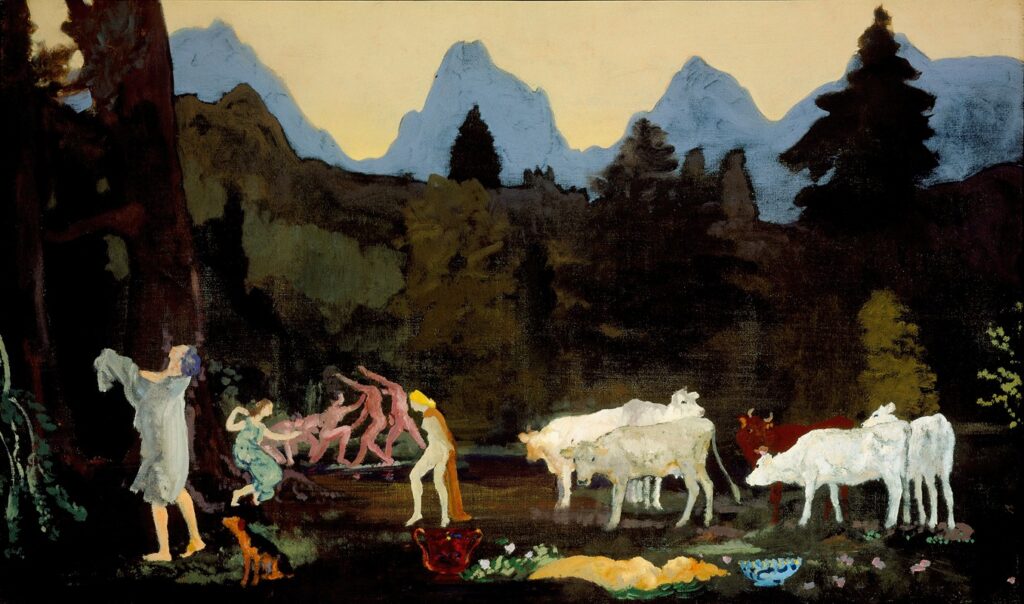
Pastoral Dells and Peaks, circa 1908–1911, by Davies
Regional museums in America showcase his contributions to modernist movements. Some galleries specifically focus on his less conventional works that blend symbolism with landscape elements.
The auction market for Davies’ paintings has remained steady, with pieces occasionally surfacing at major sales. Records indicate consistent interest from collectors seeking American art from his era, with prices reflecting his historical significance rather than contemporary trends.
Conservation Efforts
Specialized conservation techniques have been developed to preserve Davies’ unique painting style. His use of thin glazes and experimental media requires particular attention from conservators.
Museums employ climate-controlled environments to prevent deterioration of his more delicate works. Humidity and temperature fluctuations pose significant risks to the structural integrity of his paintings.
Documentation efforts have increased in recent years, with digital catalogs recording condition reports and treatment histories. Several institutions have undertaken detailed technical analysis of his painting methods to better inform preservation strategies.
Private owners receive guidance from conservation specialists on proper display conditions to minimize light damage. The delicate nature of some pigments used by Davies necessitates careful exhibition practices.
The Role of Shipping in Art Distribution
Professional art handlers employ specialized crating systems when transporting Davies’ paintings. Custom-fitted frames with vibration dampening materials protect the artwork during transit.
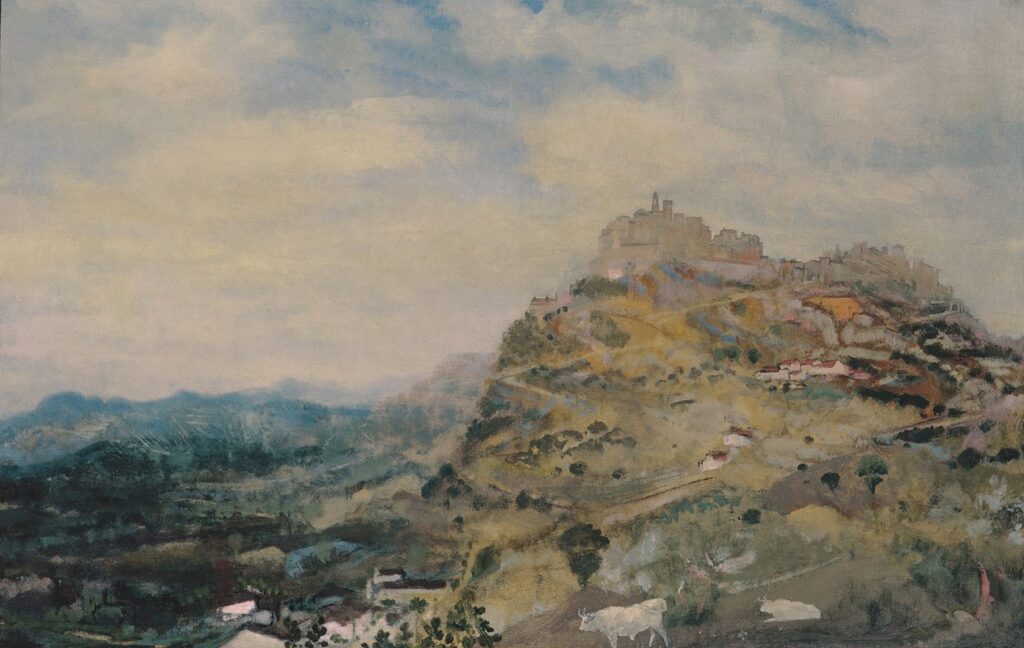
Italian Hill Town, circa 1925, by Davies
Insurance protocols for shipping Davies’ pieces have become increasingly sophisticated. Valuation experts assess each painting before transportation to ensure appropriate coverage.
International loans between museums follow strict handling guidelines. Temperature-controlled vehicles and couriers often accompany significant works when they travel between exhibitions.
Digital tracking systems now monitor shipments throughout the entire transportation process. This technological advancement has reduced damage incidents compared to earlier shipping methods from the mid-20th century.
Frequently Asked Questions
Davies has created a significant body of work that spans multiple artistic periods and styles. His paintings have found homes in major galleries and private collections across the world.
What are some notable works by the artist Davies?
Davies’ most celebrated works include “Autumn Reflections,” which showcases his mastery of light and shadow. “The Harbor at Dawn” remains one of his most recognized landscape pieces.
His portrait series “Faces of the Century” gained critical acclaim for its emotional depth and technical excellence. “Midnight in the Garden” is considered his masterpiece of surrealism.
Davies’ early work “The Red Door” is frequently cited in art textbooks as an excellent example of color theory application.
Where can one find Davies’ paintings available for purchase?
Davies’ original paintings are available through several prestigious galleries, including The Little Art Shop and Davies Paintings gallery. His works start at $500, with commissioned pieces varying based on size and complexity.
Online platforms also feature his available works, with authenticated pieces sometimes appearing at major auction houses. Limited edition prints can be purchased directly from his official website.
Local delivery options exist for buyers within certain geographic areas, as noted in his FAQ.
What historical significance do the paintings of Davies hold in art history?
Davies’ work bridges the gap between traditional landscape painting and modern expressionism. His innovative techniques influenced a generation of painters in the mid-20th century.
Art historians particularly value his contribution to color theory and emotional expression. His paintings from the post-war period document important social changes through subtle visual metaphors.
Several major museums have dedicated permanent space to Davies’ work, recognizing his impact on contemporary art movements.
Can you provide a brief biography of the artist Davies?
Born in Wales, Davies initially pursued other career paths before dedicating himself to painting. After a decades-long hiatus, he rediscovered his passion for art and developed his distinctive style.
Davies received formal training at the Royal Academy, where he studied under several influential mentors. His early career was marked by experimental approaches that later evolved into his signature aesthetic.
He established his studio in coastal Maine, where the natural landscape became a primary influence on his work.
How has Davies’ style evolved over the course of his career?
Davies began with traditional representational work focused on technical precision. His middle period saw a shift toward more impressionistic approaches with looser brushwork and bolder color choices.
Later works show increasing abstraction while maintaining recognizable subjects. Critics note his evolving use of light as a central element, becoming more sophisticated throughout his career.
Recent paintings demonstrate his integration of classical techniques with contemporary themes, creating a unique visual language.
What are the most recognized themes and subjects in Davies’ artwork?
Nature consistently appears throughout Davies’ body of work. His coastal landscapes and forest scenes are particularly well-known.
His portraiture explores human emotion through careful attention to facial expression and posture.
Davies often incorporates symbolic elements that invite deeper interpretation. Light and weather conditions feature prominently. They create dramatic moods that enhance the narrative quality of his paintings.
Urban environments occasionally appear in his work. They typically depict quiet moments in otherwise busy settings.

